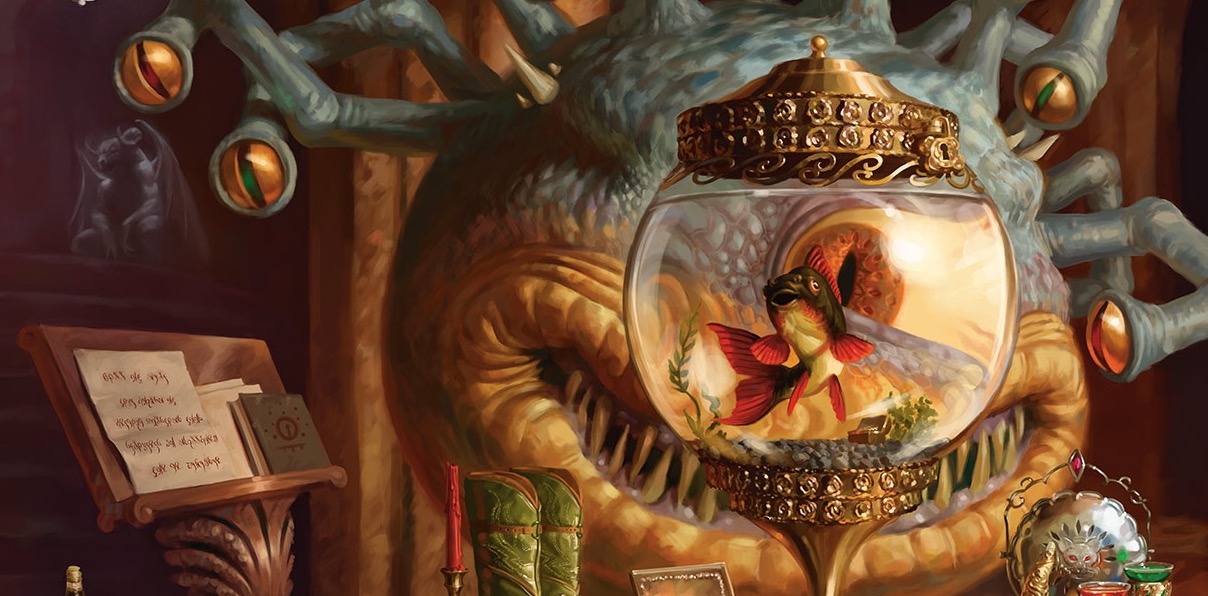D&D: First Look Inside Xanathar’s Guide


Come join the BoLS Crew as we take a look inside Xanathar’s Guide to Everything.
Xanathar’s Guide to Everything is available in select stores on the 10th. But you can take a look inside here and now, come join us as we flip through this Beholder-penned-masterpiece, for what else do you call a book written by someone armed with disintegration rays?
Threats of Disintegration aside, this book is great. Whether you’re a Dungeon Master or a Player, this book has got something for you–be it one of the 27 new subclasses (or 4 favorites from the Sword Coast Adventurer’s Guide), the host of new spells out there, or designs for fiendish new traps, new ways to generate encounters, to spend downtime–basically if you’ve been enjoying D&D, this book offers you some tools to explore the game in exciting new ways.
Without getting too in-depth (be sure and check back tomorrow for our official review), Xanathar’s Guide to Everything is everything that the Sword Coast Adventurer’s Guide wanted to be. It isn’t exactly a Player’s Handbook II or a Dungeon Master’s Guide II, but it combines elements of both without managing to make it feel like a waste. One of the risks you run with a book like this is having not quite enough content for one or the other to feel worthwhile, but Xanathar’s Guide manages to avoid that trap, leaving PCs with new class options and spells (which the DM can also choose), and by makig the Dungeon Master’s tools applicable around the table.
One of the big themes of this book is the collaborative aspect of the storytelling–so for instance, one of the big sections in the book is about exploring the world. There are rules there that rely on the players to keep track of what’s going on, rules for sleep, rules for health, etc. And then alongside that you’ve got rules for spending your downtime. This is an area targeted at Dungeon Masters but its still relevant for players–it helps them codify and figure out just what they’er doing in the days/weeks/months of off-screen time that happen in your game. It gives them rules for setting goals and pursuing them. If your players want to craft a magic item, that can be a chunk you play through, with complications and interference by rivals, and in the end you get an adventure out of someone making a Cape of the Mountebank.
So in summation, the book is great, it expands the game in interesting ways, has something for everyone, and can help broaden the storytelling horizons of your group. Worth it alone for the list of Common Magic Items.
Be sure and check back tomorrow for a full review, and we’ll take a look at a few of the subclasses in depth later in the week. Until then, happy adventuring!





